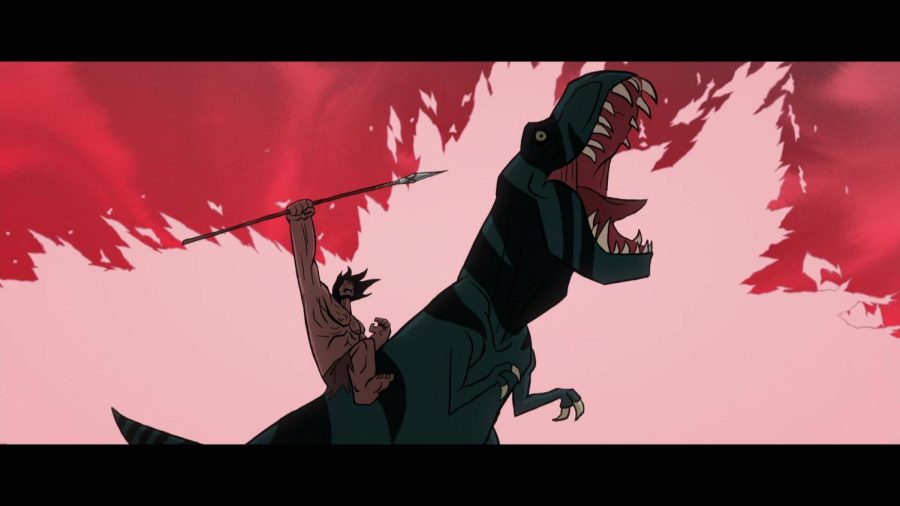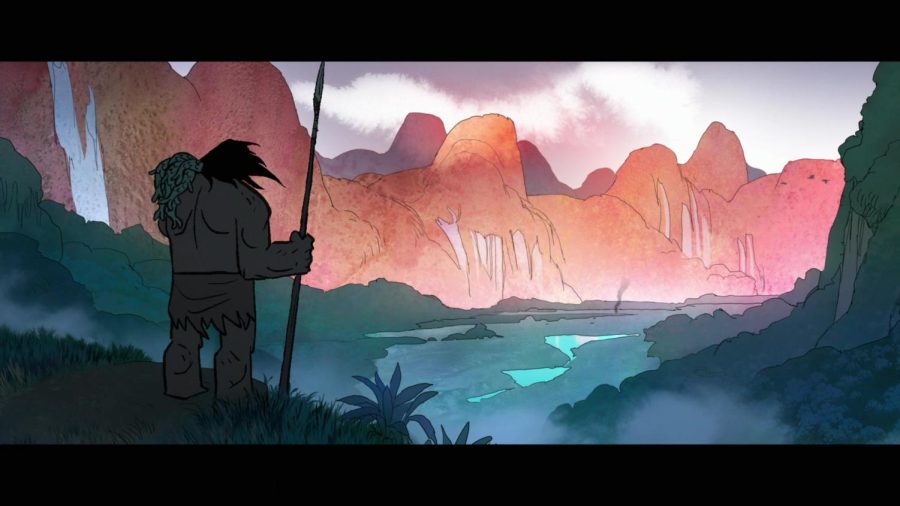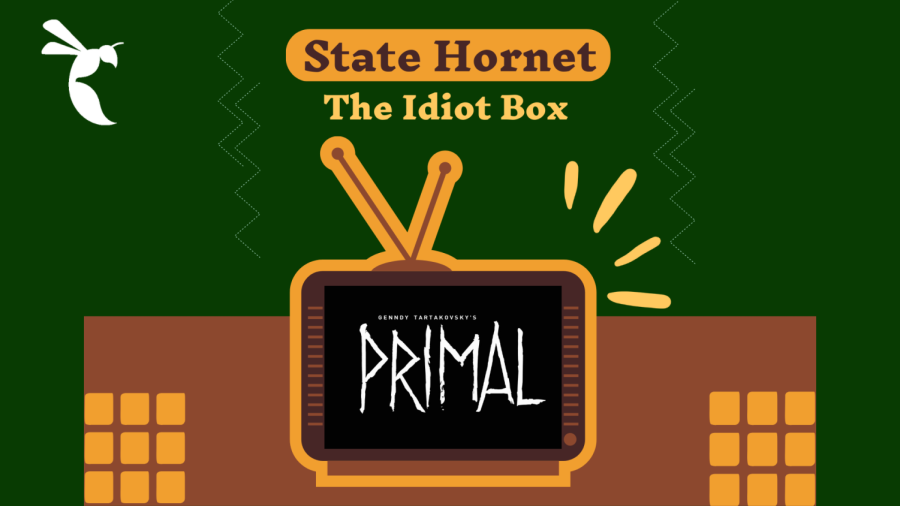The Idiot Box: ‘Primal,’ A masterpiece of minimalistic, animated storytelling
A visually striking blast from the past in the present
The “Primal” title card plays at the start of each episode. It means the survival of the fittest at any cost. (Picture courtesy of HBO Max. Graphic created in Canva by Ryan Ascalon.)
April 3, 2023
Animation is more than just a cinematic medium for children.
The storytelling in “Primal” is impressive. The show progresses its story with non-traditional forms of dialogue, relying on visual storytelling and sound design to convey emotion and build tension — exactly the creator of the series, Genndy Tartakovsky’s wheelhouse.
In Adult Swims 2019 animated series “Primal,” the show follows the unlikely partnership between a caveman and a dinosaur as they navigate a primordial world. The show’s use of color and lighting creates a stunning world that is both beautiful and terrifying.
The environments in each scene are fully rendered to add to the grand spectacle. The only way the viewer learns the names of the two main characters is by reading the first episode’s title on their preferred streaming service.
Naming conventions aside, the lack of dialogue allows the audience to focus on the characters’ expressions and movements, connecting the audience with the characters on a deeper level.
Almost everyone remembers sitting in front of a television and watching their favorite cartoon. One of my all-time personal favorites was Samurai Jack on Cartoon Network.
I could not put my finger on it then, but the show captivated me with its unique environments, brilliant sound design and a fantastic soundtrack. And the fight scenes. Oh, I loved the fight scenes.
As I grew older and revisited the series from time to time, I came to appreciate the nuances that went into the animation. The building of anticipation. The posing of characters and the masterful direction of focus in each shot can be attributed to the directing prowess and storyboarding.

Tartakovsky is a prolific animator and storyteller whose work has significantly impacted the world of animation. He is known for his unique animation style that combines fluid movement with bold graphic design and his ability to tell engaging stories with minimal dialogue.
His unique approach to animation and storytelling has earned him numerous awards and accolades, including several Primetime Emmy Awards. He is mostly known for his work on animated series like “Dexter’s Laboratory,” “Samurai Jack” and the 2003 “Star Wars: Clone Wars” micro-series. He even storyboarded the ending action sequence for “Iron Man 2.”

The inspiration behind “Primal” came from Tartakovsky’s desire to create a raw and visceral show. He said he wanted to explore the violence and brutality of prehistoric times and to do so in a both authentic and emotionally resonant way.
An example of the development of the story without the use of dialogue is when when Spear and Fang start to travel together. The two are seen in a montage hunting prey. However, they are competing against each other.
Each new pursuit shows that Fang is better at hunting than Spear because she’s a tyrannosaur — he is a caveman with a spear. After losing to Fang repeatedly, Spear has enough and attacks Fang.
The scene cuts to close-ups of them growling at each other and roaring to assert dominance. The two only stop fighting after discovering they have wandered into a nest of giant snakes.

Only after banding together do they become victorious.
The snakes would not be the only foes the pair would fight throughout their journey. The roster of combatants includes a zombie sauropod, Ape-Men, witches, Vikings and a scorpion cult, to name a few.

One of the ways “Primal” could improve is with its runtime. The show’s episodes are a mere 22 minutes, which can sometimes make the story feel rushed. The lack of dialogue can also make understanding the characters’ motivations and emotions open to interpretation in some narratives.

Despite the time constraints, what makes this series worth watching is that it allows you to feel the mood of each scene and lets you sit at that moment.
I would rank “Primal” among Tartakovsky’s best works. The show’s premise, stunning animation and engaging story make it a must-watch for animation fans and cinematic critics.



































































































































